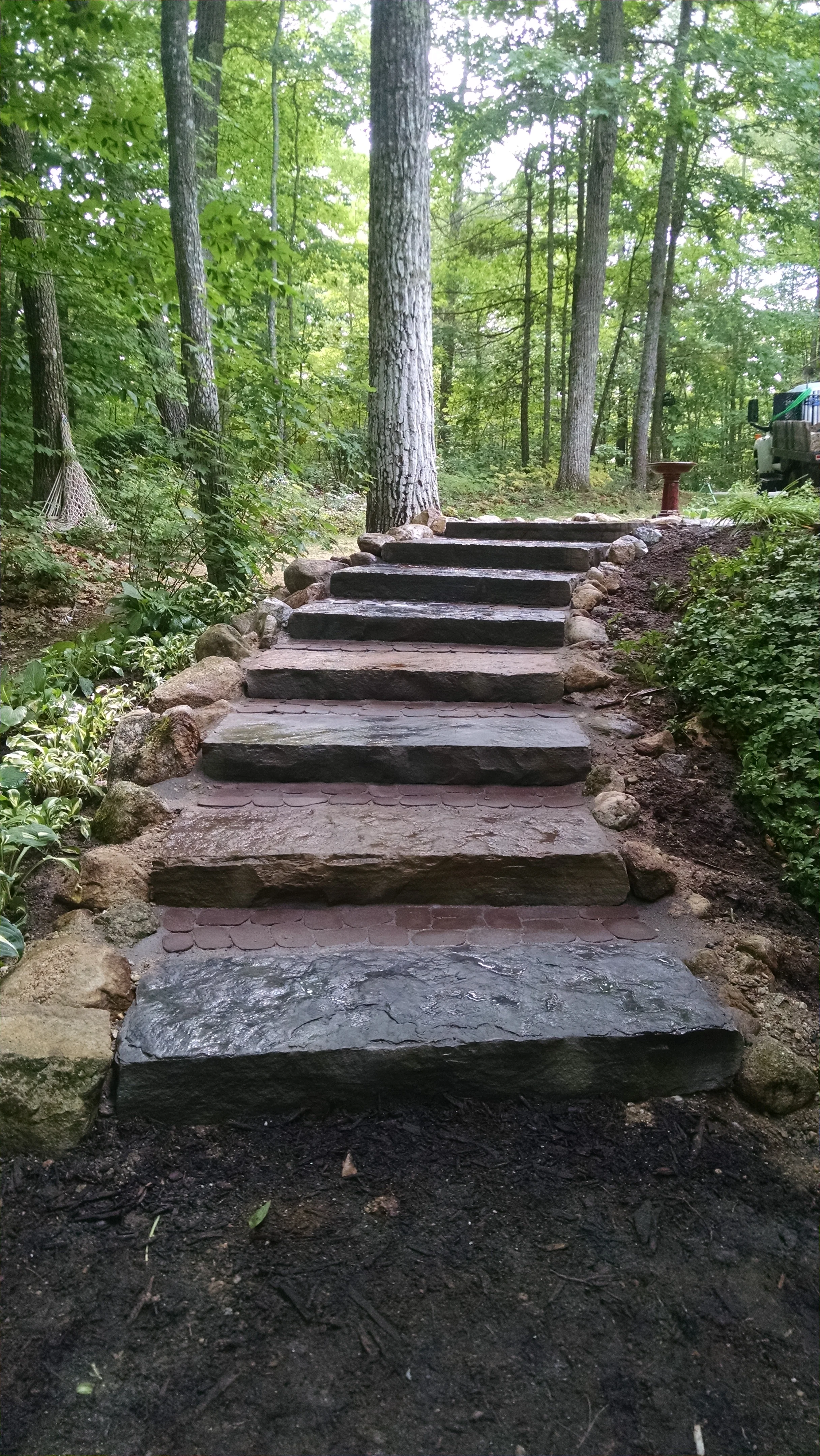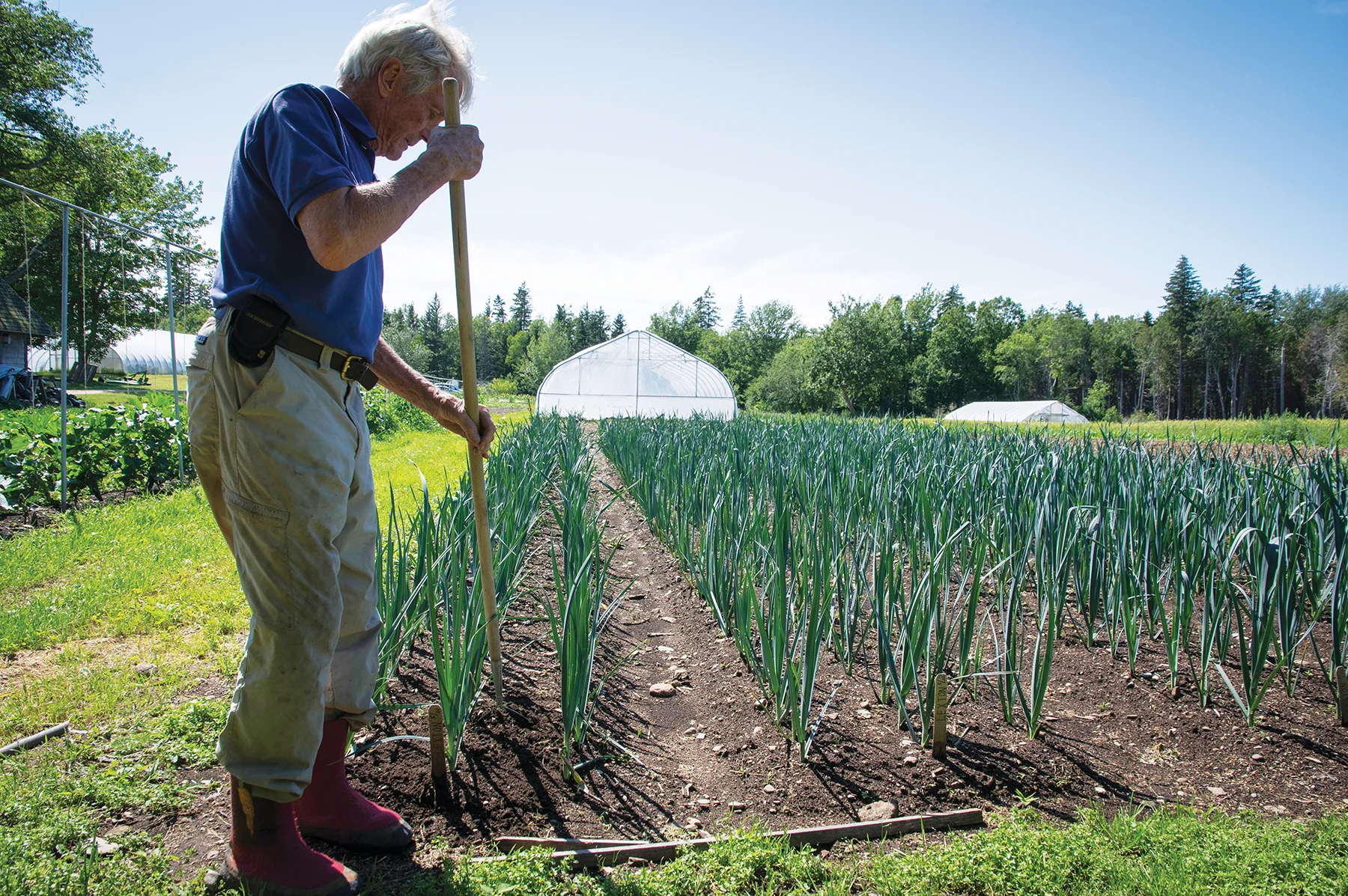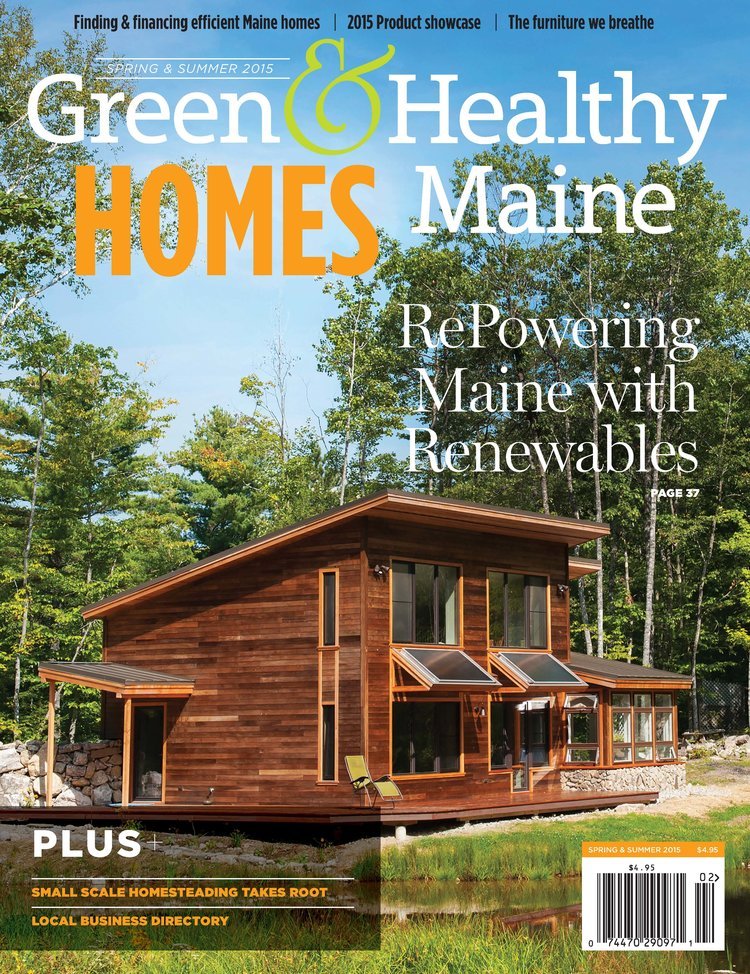Small scale homesteading tastes just right
The first growing season after Leslie rebuilt her community garden plot with curved beds to inhibit weeds and maximize rain water. PHOTO: LESLIE POHL
Home is where the harvest is
By Anna Hewitt
Homesteading has historically been considered an act of self reliance typical of rural areas with abundant land, but small scale homesteaders in Maine and across the country are finding that they can grow, raise, and produce food wherever they live. Spurred by a desire to be more connected to their food and concerns about the impacts of climate change and industrial agriculture, many people are choosing to reconnect to the basic skills and traditions that were part of everyday life for generations. People in urban and suburban areas of southern Maine are re-discovering what our rural neighbors have known all along: the delicious taste of eggs from chickens they know, the satisfaction of harvesting vegetables right outside their back door, and that there is so much more you can do with a lawn than just mow it.
The Ouellette’s aptly named their two pigs “Hammy” and “Crispy Bacon,” to serve as a reminder that they were not pets. PHOTO: MARK OUELLETTE
SMALL PLOT EQUALS BIG OPPORTUNITY
A Scarborough development made up of two acre lots and large houses is an unlikely place to find chickens and pigs. After moving there from a smaller lot in Portland, Mark and Teri Ouellette realized that they had enough space to really teach their three children about where their food comes from. Two ten-by-ten garden plots supply the family with flowers for cutting and an abundance of salad which they eat all summer long. It was Teri’s idea to add animals to their back yard farm. If Mark was reluctant at first, now he is an enthusiastic proponent of raising animals in the suburbs, not only for “the best-tasting eggs I’ve ever had” but for the opportunity to help their children “understand the cycle of life, where food comes from, and why it tastes the way it tastes.”
In addition to their flock of nine chickens which supply the family with plenty of eggs, the Ouellettes raised two pigs last year. Mark describes the experience as “absolutely unbelievable” and something he would certainly do again. The family fed and cared for the pigs but always kept in mind that aptly-named “Hammy” and “Crispy Bacon” were not pets. He admits that the first time their homegrown pork was on their plates it felt strange. But he believes that the hesitation was healthy and provoked a good conversation about their food and the animals’ life cycle. They are considering a goat, donkey, or rabbits in the future.
The development where the Ouellettes live is built on what was once farmland, and zoning laws were never changed. This allows the family to care for animals, feed themselves well, and bring a little bit of the farmland feel back to the area. Their neighbors were initially skeptical and some were even opposed to the idea but over time Mark says “people ended up loving it.”
Many towns in Maine currently allow residents to raise chickens in residential areas. Laws generally allow up to six hens (but some towns allow more) and may require permits or other specifications. Some examples of cities and towns with chicken ordinances include Portland, South Portland, Falmouth, Westbrook, Scarborough, Saco, Biddeford, Cumberland, Brunswick, York, Camden, Auburn, Orono, and Dover-Foxcroft. However, since the specific requirements of ordinances vary and are subject to change, it’s best to check with your town hall before building a chicken coop.
THE CHALLENGES OF URBAN SPACES
Although Leslie Pohl grew up in urban and suburban environments, her grandparents were farmers in Iowa and she’s always considered farming part of her heritage. After years in New York City, she and her husband moved to Maine to be closer to family. She began connecting to her agricultural roots by choosing produce from local farms, and joining her neighborhood community garden. She says she remembers vividly the first time she picked corn right from the field with her young daughter.
Her husband Bob’s concerns about energy efficiency introduced them to permaculture, a growing movement in Maine and around the world that utilizes sustainability as the basis for designing landscape and building systems. One of the central ideas of permaculture is to design landscapes in a way that they produce more energy than they consume.
As Leslie began to learn more about this approach, she was inspired to find ways to grow food in the small spaces around her apartment building in Portland’s West End. She hired a designer who specialized in the permaculture approach and hosted a work party to implement the design.
The small deck attached to the back of the apartment that Leslie shares with her husband and daughter is just a few steps from their kitchen. During the work party, they crafted a raised bed from pallets perched on one edge of the deck, and attached fabric growing pockets to the deck railings to allow for vertical planting in the minimal space. These improvements mean that, Leslie can grow a variety of vegetables to harvest right outside her door.
A raised bed constructed from pallets during a community work party. PHOTO: LESLIE POHL
Raised beds were constructed over slabs of concrete to protect plants from the lead-contaminated soil beneath. In the distance, a water barrel collects rain that gathers on the roof above it. PHOTO: LESLIE POHL
Fabric growing pockets line the railing to maximize growing space at Leslie Pohl’s Portland apartment. PHOTO: LESLIE POHL
Space was not the only challenge that she had to work with. As in many urban areas, trees and buildings block sunlight from reaching the deck for parts of the day. So Leslie also has a community garden plot in the nearby Clark Street community garden. As part of the permaculture design, she rebuilt the plot from the typical rows of plants with lots of bare soil between them, into two heavily mulched curved beds, ideal for inhibiting weeds and capturing water when it rains.
In addition to the challenge of finding time, space, and light to grow, Leslie has had to deal with another reality of growing food in a city environment. Most city soil is contaminated with lead which can make plants that are growing in it unsafe to eat. Fortunately, there are ways to work around this. Three raised garden beds were constructed in the small space between Leslie’s building and her neighbors. First, they placed slabs of concrete over the contaminated soil and layered mulch made up of seaweed, compost, newspaper, and straw to cover the slabs and create a healthy environment for planting away from the polluted soil. One of the three raised beds contains a small pond to create a welcoming environment for birds and insects that will help pollinate the plants. They also built a roof structure to funnel rainwater into storage barrels used for watering the plants. This year will be Leslie’s first season growing in the new beds and she is excited to see what happens.
Leslie is down to earth and honest about her approach to urban homesteading. Both she and Bob have taken small steps and stuck to it. She is passionate about growing food this way as well as maintaining a sustainable home and believes, “permaculture is the answer to what ails us.” As both she and Bob work full time and care for their 11-year old daughter, time isn’t always abundant. And neither is space. What they have plenty of is knowledge, and the desire to live a healthy, sustainable and harmonious life in their urban environment. “We just want to do as much as we can with what we have and learn along the way.” She hopes that their experiences, challenges, and limitations will help to build a knowledge base for others who want to try similar things.
GROCERIES FROM THE GARDEN
When Jesse McAvoy and Ben Roehrl bought a house in Westbrook they knew they wanted to transition the large lawn into garden space. They began by building a few raised beds for a vegetable garden, and five years later, they have devoted a significant portion of their half-acre property to food production. They raise chickens and ducks, and eat year-round from food they have grown themselves or purchased locally. Eating locally and growing their own food has become a way of life, and Jesse believes, a way “to produce food that nurtures us as well as our environment.”
Like Leslie, Ben and Jesse tapped into the area’s vibrant permaculture community to guide their homesteading efforts. They began by hosting a permaculture design workshop at their house to develop a clear plan for the space. They also enlisted community members to to help implement their ideas. And with the help of a work party, they built an herb spiral and large round garden beds to efficiently increase their food production. They dug an earthen basin pond to collect rainwater and attract beneficial birds and insects, and also planted berries and fruit trees which double as living fences to divide the front of the yard—closer to the street—from the back yard where the gardens and animals are located. Future plans for enhancing their home include adding solar panels, a wood stove, and constructing a more extensive root cellar which will regulate temperature and humidity for long-term food storage.
When Jesse and Ben talk about the ways they have embraced and implemented homesteading on their property, it is clear that they put a great deal of thought and planning into it. With each new endeavor, they take time to observe others who are already doing it, research every imaginable step, and figure out how it will work for them. The connections they have made through homesteading are a driving force behind what they do. They begin new projects with confidence knowing that they have a network of people to help them when things don’t go as planned, and as they learn and master skills, such as raising and processing ducks for meat, they share their knowledge with others.
Chickens and ducks at the home of Jesse McAvoy and Ben Roehrl in Westbrook provide eggs and meat year-round. PHOTO: JESSE MCAVOY
A day’s harvest at the McAvoy/Roehrl home in Westbrook. PHOTO: JESSE MCAVOY
McAvoy and Roehrl can and ferment much of their harvest to eat vibrantly year-round. PHOTO: JESSE MCAVOY
With all of the fruits and vegetables they are producing, Ben and Jesse spend a lot of time preserving food by canning and fermenting. Depending on the season they also fill their freezer with produce, homemade bread, meat from their ducks, and pork and lamb they purchase from Maine farms. They use their cool basement for long term storage of root vegetables and squash as well as unwashed chicken eggs. It may seem like a lot of work to grow, prepare, and preserve food this way but they see it as an even trade for grocery shopping. “Instead of going to the store,” Ben explains, “You go into the basement. It becomes a labor of love and once you establish a system it really doesn’t take a lot of time to maintain.” He plans ahead to fit the work in around his job while Jesse works part time and devotes his other hours to work on their homestead. They are trying to grow more perennial plants, like the perennial arugula, sorrel, and shiso greens that they use in salads, which will reduce the need for yearly planting. After increasing the garden space, they no longer spend time mowing “a bunch of useless grass.”
Jesse and Ben have put in a lot of time and effort learning what it takes to create their food, which makes eating and living this way enjoyable to them. And while their commitment to eating locally runs deep, they also believe in finding a balance, especially when it pertains to coffee, chocolate and the occasional avocado. “There is no wrong answer.” They say, “Everyone should follow their passions and do what works best for them.”
Resources for small scale homesteaders
The Resilience Hub
Formerly Portland Maine Permaculture and The Resilience Hub, and now merged into one feed, this group is about developing solutions, connections, techniques and skills – strongly rooted in permaculture – to create resilient and sustainable communities.
meetup.com/maine-permaculture/events
Midcoast Permaculture
midcoastpermaculture.com
Offering permaculture landscape design/build consultation as well as workshops, meetups and potlucks.
Maine Organic Farmers and Gardeners Association
mofga.org
A resource for learning about organic growing in Maine.
University of Maine Cooperative Extension
extension.umaine.edu
Information and answers to questions about gardening, livestock, food preservation, and more.
Community gardens in Maine
A great place to learn from other gardeners about growing vegetables in small spaces. Check with your town to see if a community garden exists in your area.
Books Recommendations
greenhealthymaine.com/blog/book-recommendations-permaculture-and-food-preservation
Renewed interest in homesteading means that in recent years many books have been published on topics such as gardening in small spaces, home cheese making, raising chickens, and more. Many of these can be found at local libraries or book stores.
Related articles
This article appeared in the Spring 2015 edition of Green & Healthy Maine HOMES. Subscribe today!
Find Maine experts that specialize in healthy, efficient homes in the Green Homes Business Directory.














